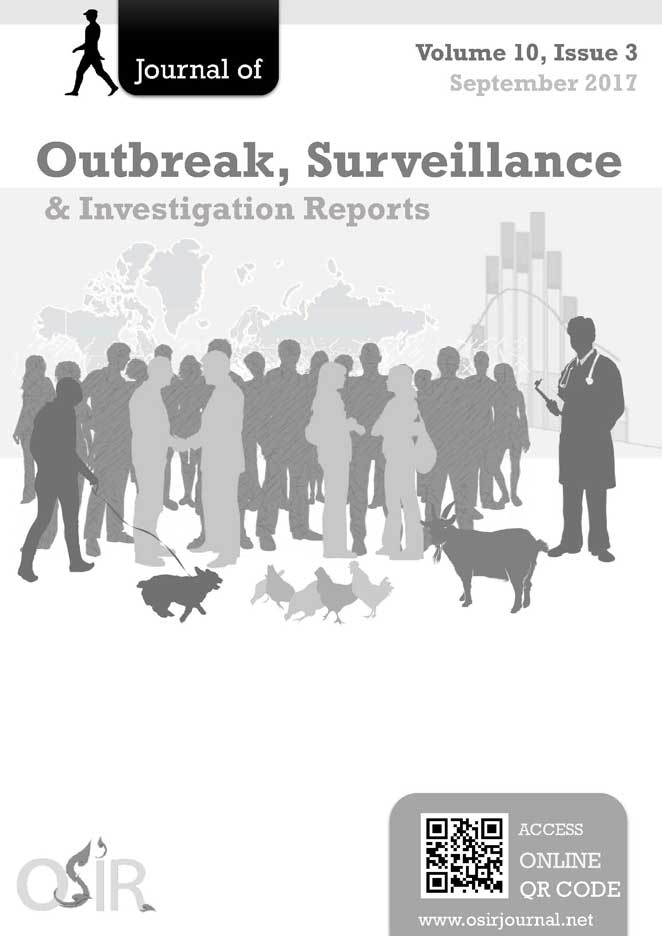System, Report Sensitivity and Data Quality of the Injury Surveillance System, Ratchaburi Province, Thailand
DOI:
https://doi.org/10.59096/osir.v10i3.263087Keywords:
injury, sensitivit, quality, accuracy, surveillance, ThailandAbstract
Since 1993 when an injury surveillance system was established in Thailand, the central Ratchaburi Province has been consistently ranked high for traffic injuries. This study aimed to describe the operation and usefulness of the injury surveillance system at Ratchaburi Provincial Hospital, and assess the sensitivity and quality of the surveillance data. The study was carried out among the injured people who visited the emergency room and/or were admitted to Ratchaburi Hospital in 2011, including those who died upon or before arrival at the hospital. Data were collected from log books, the hospital database and interviews with key informants. The sensitivity of reports in the system revealed as 93.2% for injured patients, 71.3% for deaths upon arrival, and 67.7% for deaths before arrival. Of 33 variables assessed for data accuracy, 24 (72.2%) did not pass the standard of 90%, including age, systolic and diastolic blood pressure, pulse rate, respiratory rate, blunt/penetrating injury, diagnosis, region of injury, and severity of injury. The data were used for planning purposes and to conduct a trauma audit conference. In summary, the injury surveillance system at Ratchaburi Hospital was deemed to have a high sensitivity for detecting injured patients, yet low sensitivity for those dying before being assessed. To improve the sensitivity of reporting dead cases and quality of data, the hospital was recommended to provide annual trainings for personnel working for the surveillance system.
References
Holder Y, Peden M, Krug E, Lund J, Gururaj G, Kobusingye O, editors. Injury surveillance guideline. Geneva: World Health Organization; 2001.
Christoffel T, Gallagher SS. Injury prevention and public health: practical knowledge, skills and strategies. 2nd ed. Ontario: Jones and Bartlett Learning; 2006.
Thailand. Cluster for Health Information Unit. Bureau of Policy and Strategy. Ministry of Public Health. Number and mortality rate per 100,000 population by important causes, 2003-2010 [cited 2012 June 21]. <http://bps.ops.moph.go.th/Healthinformation/2.3.6_53.pdf>
Thailand. International Health Program. Bureau of Policy and Strategy. Office of the Permanent Secretary. Ministry of Public Health, Disability-Adjusted Life Years: DALYs. 2017, Nonthaburi: The Graphico System Limited company.
Thailand. Bureau of Epidemiology. Department of Disease Control. Ministry of Public Health. Manual for recording injury surveillance data in provinces. 3rd ed. Nonthaburi: Bureau of Epidemiology; 2007.
German RR, Lee LM, Horan JM, Milstein RL, Pertowski CA, Waller MN; Guidelines Working Group Centers for Disease Control and Prevention (CDC). Updated guidelines for evaluating public health surveillance systems: recommendations from the Guidelines Working Group. MMWR Recomm Rep. 2001 Jul 27;50(RR-13):1-35; quiz CE1-7.
Thailand. Bureau of Epidemiology. Department of Disease Control. Ministry of Public Health. Monthly report on number of all injuries and injuries that received treatment in hospitals, with transport accidents in the provinces of Thailand, 2007 [cited 2012 Jul 8]. <http://www.boe.moph.go.th/report.php?cat=11&year=2007>
Thailand. Bureau of Epidemiology. Department of Disease Control. Ministry of Public Health. Number of cases, deaths, morbidity rate, mortality rate and case fatality rate from injury surveillance in Thailand, 2011 [cited 2012 Jul 8]. <http://www.boe.moph.go.th/report.php?cat=11&year=2012>
Thailand. Department of Disease Control. Ministry of Public Health. Manual for evaluating the national injury surveillance in Thailand. Nonthaburi: Bureau of Epidemiology; 2010.
United States Agency for International Development. Infectious diseases and response strategy, 2005. Washington DC: United States Agency for International Development; 2005.
Daniel WW. Biostatistics: a foundation for analysis in the health sciences. 9th ed. Atlanta: John Wiley & Sons, Inc; 2010.
Black K. Business statistics for contemporary decision making. 4th ed. Hoboken: Leyh Publishing; 2004.
Thailand. Epidemiology Section for Non-communicable Diseases. Bureau of Epidemiology. Department of Disease Control. Ministry of Public Health. Manual for coding in injury surveillance record form. 3rd ed. Nonthaburi: Bureau of Epidemiology; 2007.
Thailand. Bureau of Policy and Strategy. Ministry of Public Health. Classification of ICD-10-TM for primary care unit. Nonthaburi: Bureau of Policy and Strategy; 2009.
Thailand. Epidemiology Section for Non-communicable Diseases. Bureau of Epidemiology. Department of Disease Control. Ministry of Public Health. Manual for coding modified AIS 85 in injury surveillance data in provinces, 1995. Nonthaburi: Department of Disease Control; 1995.
World Health Organization. Communicable disease surveillance and response systems: guide to monitoring and evaluation. 2006 [cited 2012 Jul 8]. <http://www.who.int/csr/resources/publications/surveillance/WHO_CDS_EPR_LYO_2006_2.pdf>
Macarthur C, Pless IB. Evaluation of the quality of an injury surveillance system. American Journal of Epidemiology. 1999 Vol.149;6:586-92.
Tanasophon W, Thong-on W. Evaluation of chikungunya surveillance in Chonburi Province, 2009. Weekly Epidemiological Surveillance Report. 2011 Mar;42:S15-9.
Pakapaiboon S, Chaichest C. Evaluation of dengue surveillance in Pangsilathong District, Kamphaengphet Province, 2009. Weekly Epidemiological Surveillance Report. 2011 Mar;42:S49-52.
Downloads
Published
How to Cite
Issue
Section
License
Copyright (c) 2023 Outbreak, Surveillance, Investigation & Response (OSIR) Journal

This work is licensed under a Creative Commons Attribution-NonCommercial-NoDerivatives 4.0 International License.









